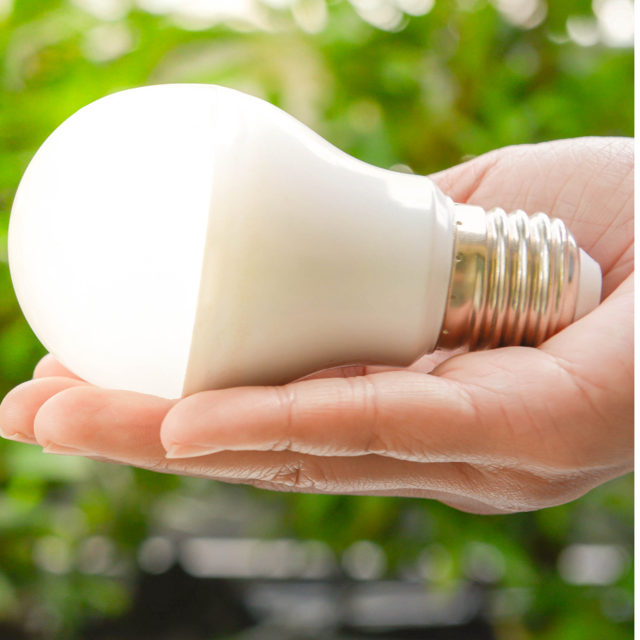Top Tips to Help Your Store Save Energy
Saving energy in store is beneficial to your business from a profitability perspective as well as from a reputation standpoint, helping you to move toward green credentials.
Understanding your current energy usage and waste is the first step towards saving energy in store. Energy saving a store-wide responsibility. Making a number of small changes, and establishing simple energy-efficient practises can go a long way to saving energy in your store without taking drastic or expensive measures.
Our top tips to adopt energy saving habits in your store could help your business save energy without any big switches.
- Switch to Energy Saving Light Bulbs
A well-lit store is a must for customer and staff safety, as well as for use in refrigerators and POS displays. However, Compact Fluorescent Lightbulbs (CFL) and Halogen bulbs are not energy efficient solutions for your store. Making the simple switch to energy efficient LED light bulbs could save your store significantly on electrical energy use and bills, without impacting your in-store lighting quality. - Review and maintain your equipment
Commercial buildings and places of work must adhere to routine PAT testing of handheld electrical equipment and integrated appliances. This provides the perfect opportunity to review and maintain electrical equipment and appliances to ensure everything is working correctly and efficiently. Reviewing your existing equipment regularly allows you to see where you can replace older equipment with newer, energy saving devices and equipment. This may mean an upfront cost but is simple and cost-effective in the long run. - Switch off when you lock up
The simplest energy saving habit to adopt in store is for staff to switch off all handheld appliances, lighting and smaller, re-bootable devices when locking up the store. Granted, not all appliances and equipment are able to be turned off at the mains during lock up duty, but many handheld devices and every day equipment can be, especially the store’s lighting.
Although electronic solutions such as your store’s security system and in store surveillance cannot be switched off during routine lock up, lighting and unused electronic devices can and is a small change that can make a surprisingly big difference with many retailers accounting for lighting as being their biggest cost each year. - Switch to smart appliances and devices
Auditing your store’s existing appliances and devices to see where you could realistically switch to smart solutions is a longer-term energy saving effort that may be worth investing in. Smart technologies for retail stores, shops, and supermarkets include digitised processes and mobile POS. The use of automated smart devices in store quickens and eases the customer’s journey, allowing for better control of electrical device usage, as smart devices often come with built-in timers to go into ‘sleep mode’ or shut down. - Invest in renewables
This is a long-term energy saving solution with a clear upfront cost but will future proof your store and save money over time. Running on Renewable Energy Certified sources (REC) also improves your CSR, especially if you are a corner store as part of a wider chain. The Co-Operative Group, NISA Local, and the bigger supermarket Sainsbury’s have all pledged to invest further into renewables and have set out plans to achieve this.
From on-site renewable energy sources such as solar power from panels on your store’s roof which allow you to power and store your energy source, to tapping into off-site renewable energy sources such as Wind Power, investing in renewables as an independent store or as part of the renewable movement of your wider chain can have massive benefits to energy savings in store. - Install motion sensors
Many smaller stores and corner shops rely on standard shop doors that are manually propped open during opening hours. This causes the store to lose heat and insulation throughout the day which in turn means cranking the heating up in order to regulate the temperature for both staff and customers. Having motion sensors on your doors allows doors to only open for incoming customers, keeping the cold out during trading hours whilst remaining clearly open for shoppers. Motion sensor lighting for staff areas of your store such as bathrooms and the stockroom avoids lighting empty rooms and wasting electricity, with lighting often being quoted as the main electrical cost in stores and shops.
Touch sensors for electrical devices can also act as a cost-effective way to keep electrical usage down. Automated motion sensored lighting, doors, and electrical devices such as POS systems allow for less energy consumption without impacting the customer experience. - Regulate temperature
Reviewing your store’s temperature during trading hours helps to save money on unnecessary heating usage and allows for a more pleasant environment for staff and customers alike. Using a thermometer to review and regulate the temperature in store and ensure thermal comfort throughout the day allows you to adjust your heating accordingly. For example, during high-footfall periods of the day, more customers in-store means more natural heat and no need for heating compared to quiet periods in store.
Reviewing and upgrading your store’s HVAC system regularly ensures efficient heating and ventilation. Outdated or inefficient HVAC systems are leading causes of energy waste in retail environments.
Adjusting the temperature of your store to suit the different seasons and times of the year is also a simple and effective way of reducing your energy usage. For example, your heating system does not need to be on during the height of summer but you may need to run air con. Air conditioning and heating running at the same time is counterproductive and costly but many stores do run both at the same time. - Turn off devices when not in use
Defaulting to having devices turned off when they are unused or irregularly used in-store can be a simple way to curb energy wastage and keep your electricity costs down. Getting staff onboard and taking responsibility for their own energy-efficiency in the workplace is an easy and effective way to save energy in store daily. Using the built-in timers and energy saving features on electrical devices is a great way to automate this practice.
Rolling this out to all staff even as part of a routine checklist of responsibilities is a great way to adopt this practice which should in time become second nature as a ‘way of working’ in store. - Shut off refrigerators and chilled sections of your store
Most corner shops, stores, and supermarkets include chilled and refrigerated sections of produce. A simple solution to reduce energy waste, already adopted by many small stores in the UK, is to have doors on your chilled and refrigerated storage displays which results in less heat lost in store.
This means you won’t have to crank up the heating to combat your open-topped chilled refrigerated store section. This should have no impact on your produce or the customer experience within the store, and will in fact benefit it. Chilled and refrigerated items will stay cooler than they otherwise would when met with the heating of your store or shop and the temperature of your retail store will be better and more easily regulated. - Pay for a Professional Energy Audit
If you’re serious about saving energy in store, it might be worth investing in an initial energy audit to understand your current usage waste and identify your store’s saving opportunities. Although this includes an upfront cost, as a one off payment to understand the shape of your energy waste and savings in your store, it is a worthwhile place to start.
Every store is slightly different and so understanding how you could improve upon your current operations is key to creating a plan of how to firstly, reduce energy waste and secondly, make smart swaps to energy-efficient solutions, however big or small. Commercial energy audit quotes are readily available online and offer a detailed state of play of your store’s current energy usage.
Now you know the importance of reviewing your current energy usage and in store devices, as well as reviewing your everyday operations. We’ve covered small and simple switches to saving energy in store and bigger investments into energy efficiency, such as renewable energy sources and smart device solutions, so you can reduce both your energy uses and running costs in store.
Not a Payzone Retailer?
If you’re not a Payzone retailer then come and join us - it’s easy!
Fill out this enquiry form or give us a call on 0800 0566 015 to find out more about our fantastic range of products and services.

-

Latest News
Customers, especially vulnerable customers, may be concerned about their energy company going out of business.
Read more
-

Latest News
If your energy company has ceased trading recently, Ofgem has been working behind the scenes to make sure you will be assigned a new supplier.
Read more
